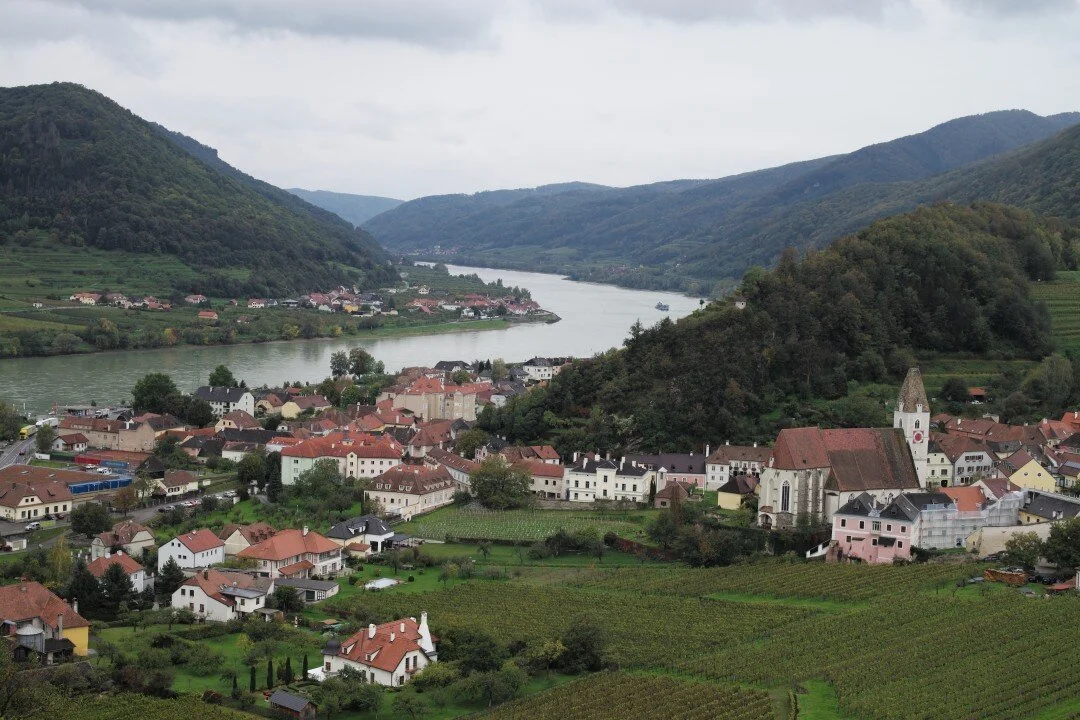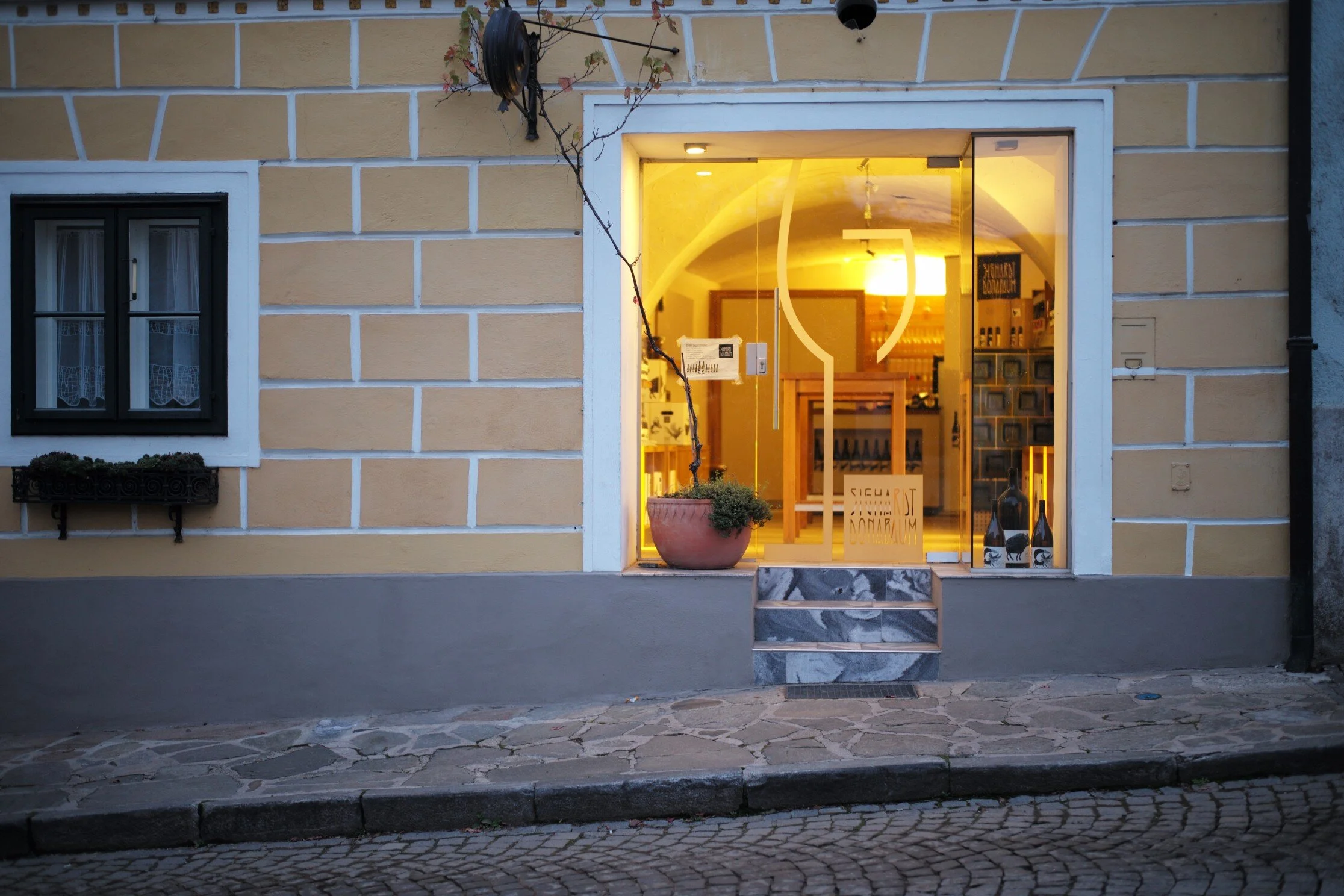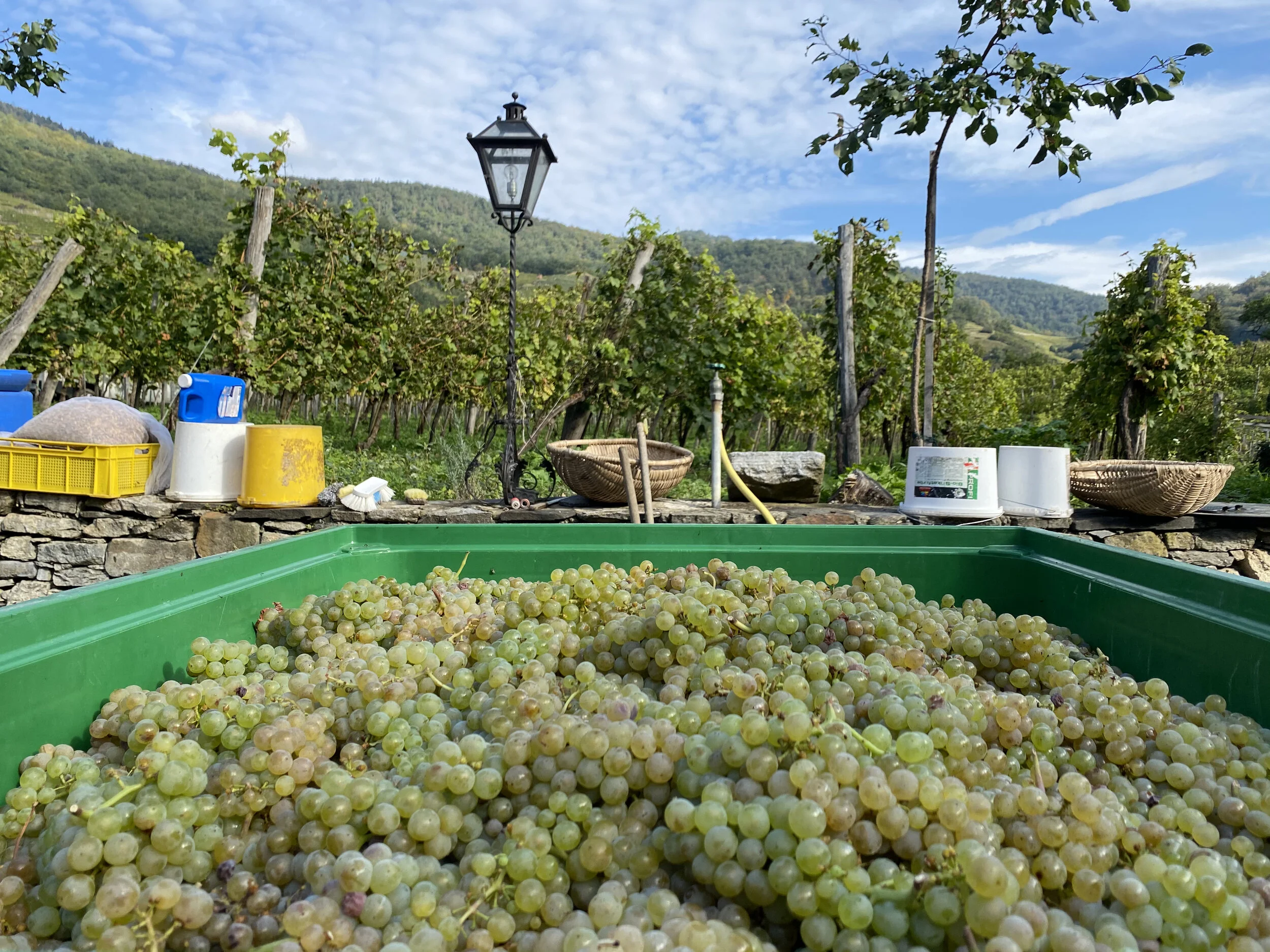An Unexpected Sabbatical in Austria’s Wachau Valley.
In October 2020 I was on my way towards taking a thirty day sabbatical in Georgia where I expected to learn how to make wine the ancient way. For thousands of years the locals would ferment, store and age their wine in kvevri, large amphora shaped vessels made from terracotta. These vessels would then be sealed and buried underground, or kept in Marani—underground cellars for months. I was all set to learn this traditional technique by an expert winemaker.
Everything was arranged. I was planning to fly direct to the Georgian capital Tbilisi from Vienna, Austria and the travel agency Kaukasus Reisen had arranged a weekend tour of the city before making the six hour drive to the coastline where I would find the beautiful Adjarian Wine House. Here winemaker Lado Shaturushvili agreed to take me under his wings as an apprentice. While the grapes would already be harvested as of August, I would assist him in preparing the vines for the next season and with unearthing some of the kvevri from previous seasons for bottling.
And then the devastating news — new visa restrictions were passed in Georgia due to the pandemic. While I could still enter the country under a digital nomad visa I would have to stay for 14 days in quarantine in Tbilisi at my own expense and I would have to stay in the country for a minimum 180 days. Unfortunately, I only requested a five-week sabbatical, so this wouldn’t work at all.
The Best Laid Plans
Before I get to my experience in Austria’s Wachau Valley perhaps a little context is necessary.
Exactly two years ago I was hiking in Peru with Rick and Joe, my roommates from college. We’ve kept in touch since graduation more than 20 years ago and we have started a tradition of meeting up when life affords the time. In 2017 we met in Munich and Joe talked about his proverbial bucket list. He recently turned 50 and was going to the Great Wall of China. When we asked what was next on his list he said the the 800 year old citadel in Peru, Machu Picchu. At a brewery in Munich we sketched out the dates on a napkin and landed two years later in Lima on 12 October.
Me, Rick & Joe at Machu Picchu in 2019.
On my flight back home to Zurich, Switzerland from Lima I began thinking about my own bucket list and then the unthinkable happened. Our fourth roommate from school, Mike collapsed and died as he was getting his three kids ready for Halloween. The three of us were devastated particularly as we had planned to video chat with him from Peru to rub it in that he didn’t join us.
A few days later I would be flying to New York for the funeral, which got me thinking. Since I turned 16 I’ve been working full-time, 40 hours a week, and I’ve never taken more than two-weeks off for vacation. Sadly, Mike's passing was the motivation I needed to stop dreaming about a sabbatical and to just do it.
My sabbatical plan was planned for two to three months for the fall of 2019 to work at an oyster farm and a vineyard in Georgia. Why wine and oysters? Well, along with coffee, I appreciate the history, their simplicity and that they are produced naturally — with only a little aging or change in temperature, they make life just a little tastier.
Then COVID-19 happened followed by lockdowns and border closures. I could possibly enter the UK, but being allowed to return home was questionable and based on the new visa rules I mentioned earlier, Georgia was now out of the question. My well laid plans were now officially kaput. I felt as if I was letting Mike down, so to say I was disappointed puts it mildly.
Guten Tag Wachau Valley
It was now June and I was in Vienna, Austria, due to the unfortunate passing of my father-in-law Herbert. He loved wine and there wasn’t an occasion where we didn’t enjoy a bottle or two of Austrian Grüner Veltliner usually from the Wachau.
When I tell people about the Wachau I describe it as the Bordeaux of Austria. While it is not near the ocean, it’s right on the Danube River with rolling hills and a storied history dating back to 853 AD. Even King Richard the Lionheart spent some time here. Another similarity is the importance of terroir in this region and as such most of the wines from the Wachau specifically indicate the plot where they were harvested from, such from Axpoint and the famous Zornberg.
As a homage to my father-in-law several weeks later I travelled to the Wachau for a long weekend of cycling, hiking and wine tasting - by train it’s only 90 minutes from Vienna or for the fit by bicycle in a little under four hours.
The Wachau Valley is rather small at only 36 kilometers in length bookended by the villages of Melk, with it’s grandiose abbey and the historic, artsy university town of Krems. You can easily cycle between both cities in under an hour by following a bike path along the Danube River offering stunning views, but just as importantly, the river provides a cool breeze during the hot summer to the more than 120 vineyards of Grüner Veltliner, Riesling, Neuburger and Gelber Muskateller grapes that line up along its path.
But before heading back to Vienna I was flipping through a Falstaff wine guide of the region and my eyes were drawn to the label of Sighardt Donabaum, a small winemaker in a village located nearly perfectly in between Krems and Melk called Spitz.
The label featured various hand-drawn animals in the style of Ralph Steadman, of Hunter S. Thompson fame, and it could be easily mistaken for a trendy, hipster New World winemaker from New Zealand or Oregon. And this is why it caught my attention because it looked so out of place for a traditional wine region included on the UNESCO World Heritage List. After realizing that he was located only a few minutes away I rode over to his vineyard and rang him up.
Standing outside, what I would later on learn, is his home, I could hear the phone ringing in his kitchen. He answered and quickly realized I was downstairs — clearly I had just woken him up. Nonetheless he held up his giant hand outside his window suggesting that he needed five minutes. I agreed post haste and before I knew it he zoomed past me on his Vespa from the wine cellar and told me to follow him.
Less than five minutes later we were standing inside his quaint retail wine shop in the middle of Spitz across from a 100+ year old water fountain and a local clothing shop selling lederhosen and dirndl, traditional regional clothing.
Donabaum’s wine shop in Spitz, Austria.
After inviting me in to the shop, which was closed, I was firing questions at him, bouncing back and forth between English and German. At nearly 50, Donabaum has an aging rockstar appeal to him and it reminded me of another excellent winemaker whom I admire, Charles Smith. I passed the complement to him and he was clearly satisfied - as I would soon learn, my assumption was correct. Donabaum is a non-conformist and doesn’t follow the rules of traditional wine making in this region.
Similar to Germany’s wine classification system of Deutscher Wein, Landwein, Qualitätswein and Prädikatswein followed ripeness levels: Kabinett, Spätlese, Auslese, Beerenauslese, Eiswein and Trockenbeerenauslese, the Wachau has it’s own.
In the Wachau the classification is based on levels of alcohol. At 11.5 percent and less there is Steinfeder, named for the grass found near the vines in many of the Wachau’s terraced vineyards. Similar to the characteristics of the wine it’s named for, you can expect light and fragrant tastes on the palette.
Next in line is Federspiel with alcohol levels between 11.5 and 12.5 percent. Named for falconry and the hunting that was practiced in the Wachau centuries ago, you can expect this wine to be dry and to pair well with food.
At the top of the list with a minimum of 12.5 percent is the appropriately named Smaragd or emerald in English. Wines with the Smaragd classification are powerful, complex and concentrated and are perfect for aging. They are typically harvested late, which I had first hand experience at during my sabbatical.
Now that you know this, disregard it — for now. Because as I said earlier, Donabaum doesn’t follow the rules. While you can admire the art on his many labels you won’t find Steinfeder, Federspiel or Smaragd.
I spent about 90 minutes at Donabaum’s cozy wine shop tasting between 12-15 wines. Each one more complex from light Rieslings and Grüner Veltiner’s with green fruits to an unusual sweet, orange creamsicle Gewurtztraminer to a Merlot which would pair amazingly with a piece of cacao dark chocolate and a burning fireplace. Suffice to say I walked, err stumbled, out of his shop with 500 Euros less in my bank account.
After sobering up and returning back to Vienna, Donabaum’s passion for wine left an impression on me and then the idea clicked - what if I do my sabbatical with Donabaum? The next day I emailed him and followed up with a phone call - he accepted. I would arrive on 1 October and work with his harvesting team.
My sabbatical was saved or so I thought.
The Tooth and the Pivot
For three days I was working with Donabaum and his small team of four wine pickers. Led by Kuba, he gave me a crash course in harvesting the grapes. Originally from Poland, Kuba has been working with Donabaum for several years and when he is not picking grapes in Austria he has also worked with winemakers in Tuscany, Italy.
The literal fruits of my labor - freshly picked Riesling.
My grape harvesting education would start with, what else, Grüner Veltliner. The vineyard was owned by “Rudy”, who was a sheriff in the region for more than 25 years. When I asked him about the most interesting police case in his career I expected to hear about graffiti on a church or a stolen car in the river, instead it was much more scandalous.
10 years ago Helmut Osbergers was sentenced to 20 years to life in prison for poisoning the Spitz Mayor Hirtzberger. Osberger left a box of strychnine-laced “Mon Cheri” chocolates on the mayor’s car resulting in irreversible damage to Hirtzbergers brain - today he remains in a vegetative state. Yikes!
Getting back to winemaking, it was a very successful first day. The Grüner Veltliner were healthy and plump as they should be. The harvesting process is fairly simple. Each picker gets a bucket. We clip grapes and once each bucket is filled they get dumped into a larger container sitting on the back of a pick-up truck. Each container holds around 350 kg of grapes, which when pressed makes about 350 bottles (approx 1kg of grapes equals one 750ml bottle of wine).
After filling up four to five of the 350 kg containers over the course of eight hours we drove over to Rudy’s cellar where we crushed the grapes, de-stemmed them in a tumbler and then poured the juice into fiberglass tanks in the cellar where they will remain until year next year. As the juice was flowing into the tanks Rudy used a refractometer to measure the amount of sugar in the grapes and he seemed to be pleased with the result. In fact, he bottled some for us to taste. Known locally as “sturm”, which translates to “storm” in English, it’s a hazy, cloudy, almost-wine sold only between the end of September until mid-October - after a long, warm day in the vineyards it was a fitting end.
For the next few days I continued to work with Kuba and the team and eventually I saw up close the devastating effects of climate change - hail. On 24 August a hail storm hit the Wachau Valley. The hail was not in the typical shape of small ice balls, but in razor sharp discs, which shredded the leaves from the vines. This left the grapes on the vines with no means to convert sunlight to energy. The hail impacted vineyards are in stark contrast to the plump bunches from my first day. Some of the grapes dried up into stones, some were smaller in size and brown and others had fungal grey rot known as botrytis, which in small amounts is okay, but not when it effects the majority of the grapes. For the wine pickers this makes our job extra challenging as we need to trim away the rot from the healthy, which reduces volumes.
Everything was going as I had hoped, but as Donabaum gave me a ride back he started to complain about a tooth pain. The following morning he said we wouldn’t be harvesting today because he was going to require surgery on his tooth. Later I received another text that he would be out indefinitely - I panicked.
Sitting from my small flat in Spitz I saw my wine sabbatical once again on the brim of non-existence. To collect my thoughts I took a 30 minute walk to the “Rotes Tor” or Red Gate, the only remaining gate from the former city wall. On my way up I passed Laglers Weingut and saw about 15 people who clearly just came from the vineyards. With my spirits slightly lifted I went to the website of the weingut and emailed the head winemaker Karl Lagler Jr and told him my story. He responded a few hours later saying that he could always use extra hands at this critical time in the harvest season and suggested that I come tomorrow at 7:45.
Lagler is a 180 degree difference from Donabaum. The Lagler family has lived on the land since 1789 and has been making wine since the 1970s. Lagler’s wines do follow the traditional classifications for Wachau wines and they have received much acclaim. For example, the 2019 Riesling Smaragd Ried Steinporz was given 94-96 points and 2019 Riesling Smaragd Ried 1000-Eimerberg, a 93-95, by Falstaff.
Rotes Tor was meant for me to walk through to save my sabbatical.
As with any first day on the job, I arrived 10 minutes early and eventually met the harvesting crew. Spanning a mix of ages from early 30s to 70s they came from as far as Tyrol, Graz and also some locals. This diversity kept me on my toes to understand what they were saying due to the variety of dialects. I was told many of the vineyards we would be working in over the course of the next several weeks were significantly impacted by the hail storms of late August — and it showed. Barbara, who has been harvesting for a few decades was my teacher and she pointed out how to tell when the grapes were sour and should be discarded from the ones which are still salvageable.
The day started on a terraced vineyard looking down at the train tracks along the Danube offering a postcard view as the morning fog lifted with the rise of the sun. Since tractors and pick-up trucks cannot possibly make it up the terraced hillside we would clip the best grapes in our buckets, which would then go in a larger bucket. The larger bucket would then be strapped on the backs of some of the younger harvesters and then carried down — I offered to do it, but since it was my first day the experts stepped in.
At the end of the day I learned that our harvest achieved Smaragd classification — Lagler Jr. was thrilled and for me it felt like I contributed to a $2,500 Petrus. Behind the scenes as we were harvesting Karl Lagler Sr, Lagler Jr and the winemakers felt that the sugar content of the grapes may reach Smaragd. This triggered them to call a local official to bring refractometer to measure the sugar levels as they press the grapes into steel tanks where they would remain until Spring 2021.
A few days later we picked Riesling where I learned a new technique. For these vines Karl Jr and the team wanted to achieve Federspiel, the mid-level classification. To do this we would not clip the grapes, but leave them on for a few more days to achieve more sugar content. So instead of clipping we would trim them. Removing some rot and creating more space on the vines for air to reach the grapes. I learned a lot in a short period and just as importantly I gained an even greater appreciation for wine.
Lagler Sr. on the left on his family vineyard in the Wachau Valley.
Auf Wiedersehen Wachau
All good things must end and the 31st of October was my last day in the Wachau. After checking out of the AirBnB I went up to Lagler Weingut for the final time to thank Lagler Jr again for giving me the chance. He was grateful and gave me some of those 95-97 point wines in return. He also invited me to come back the first days of May for the Wachau Wine Spring Festival where he will give me a bottle of the Smaragd I harvested, but to me it will always be my first Petrus.
Before leaving I sipped a final glass of Riesling and said “prost” to Mike and Herbert.
Fast Forward to Today
The sabbatical was transformative and a series of events led to the journey I’m on now, which is the launch of Kapitel Zwei Wines. This fall I started a three-year education at IMC Krems, while simultaneously starting up two vineyards.
Read the original version of this story on LinkedIn.







